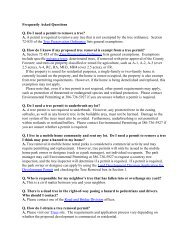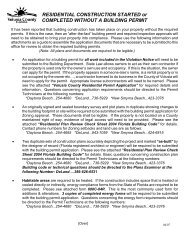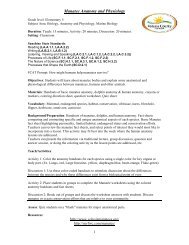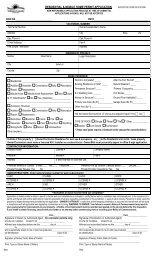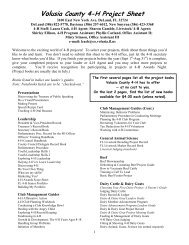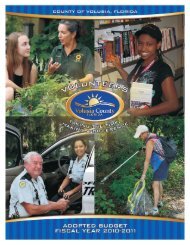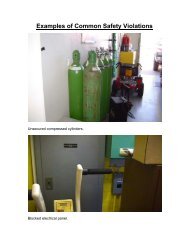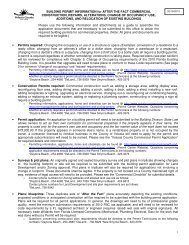Local mitigation strategy (LMS) - Volusia County Government
Local mitigation strategy (LMS) - Volusia County Government
Local mitigation strategy (LMS) - Volusia County Government
You also want an ePaper? Increase the reach of your titles
YUMPU automatically turns print PDFs into web optimized ePapers that Google loves.
SECTION 4: HAZARD IDENTIFICATIONTABLE 4.1: Descriptions of the Full Range of Initially Identified HazardsHAZARDHurricane andTropical Storm WindLightningSevere Winter StormThunderstormTornadoHYDROLOGICCoastal ErosionDESCRIPTIONHurricanes and tropical storms are classified as cyclones and defined as any closedcirculation developing around a low-pressure center in which the winds rotatecounter-clockwise in the Northern Hemisphere (or clockwise in the SouthernHemisphere) and with a diameter averaging 10 to 30 miles across. When maximumsustained winds reach or exceed 39 miles per hour, the system is designated a tropicalstorm, given a name, and is closely monitored by the National Hurricane Center. Whensustained winds reach or exceed 74 miles per hour the storm is deemed a hurricane.The primary damaging forces associated with these storms are high-level sustainedwinds, heavy precipitation and tornadoes. Coastal areas are also vulnerable to theadditional forces of storm surge, wind-driven waves and tidal flooding which can bemore destructive than cyclone wind. The majority of hurricanes and tropical stormsform in the Atlantic Ocean, Caribbean Sea and Gulf of Mexico during the officialAtlantic hurricane season, which extends from June through November.Lightning is a discharge of electrical energy resulting from the buildup of positive andnegative charges within a thunderstorm, creating a “bolt” when the buildup of chargesbecomes strong enough. This flash of light usually occurs within the clouds or betweenthe clouds and the ground. A bolt of lightning can reach temperatures approaching50,000 degrees Fahrenheit. Lightning rapidly heats the sky as it flashes, but thesurrounding air cools following the bolt. This rapid heating and cooling of thesurrounding air causes thunder. On average, 73 people are killed each year bylightning strikes in the United States.Severe winter storms may include snow, sleet, freezing rain, or a mix of these wintryforms of precipitation. Ice storms occur when moisture falls and freezes immediatelyupon impact on trees, powerlines, communication towers, structures, roads and otherhard surfaces. Winter storms and ice storms can down trees, cause widespread poweroutages, damage property, and cause fatalities and injuries to human life.Thunderstorms are caused by air masses of varying temperatures meeting in theatmosphere. Rapidly rising warm moist air fuels the formation of thunderstorms.Thunderstorms may occur singularly, in lines, or in clusters. They can move through anarea very quickly or linger for several hours.A tornado is a violently rotating column of air that has contact with the ground and isoften visible as a funnel cloud. Its vortex rotates cyclonically with wind speeds rangingfrom as low as 40 mph to as high as 300 mph. Tornadoes are most often generated bythunderstorm activity when cool, dry air intersects and overrides a layer of warm,moist air forcing the warm air to rise rapidly. The destruction caused by tornadoesranges from light to catastrophic depending on the intensity, size and duration of thestorm.Landward displacement of a shoreline caused by the forces of waves and currentsdefine coastal erosion. Coastal erosion is measured as the rate of change in theposition or horizontal displacement of a shoreline over a period of time. It is generallyassociated with episodic events such as hurricanes and tropical storms, nor’easters,storm surge and coastal flooding but may also be caused by human activities that altersediment transport. Construction of shoreline protection structures can mitigate the<strong>Volusia</strong> <strong>County</strong> Multi-jurisdictional <strong>Local</strong> Mitigation StrategyFebruary 20104:2



